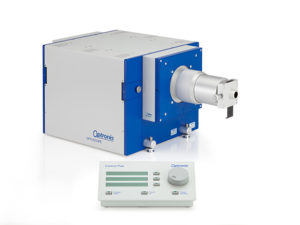Description
After more than 30 years of experience with image intensified cameras, PCO are proud to introduce the new pco.dicam C1.
The pco.dicam C1 is the first camera system with image intensifier technology that harnesses the full power of the sCMOS sensor. The optical connection of the high-resolution 25 mm image intensifier to the 16 bit sCMOS sensor via an efficient tandem lens is unique in the industry. Individual photons are detected using the shortest exposure times.
Camera Link HS guarantees uncompressed and secure data transfer via fibre optics, hence long distances between camera and controller are a given.
Key Features:
- Exposure times: 2.5ns – 1s
- 25 mm intensifier.
- “Ultra speed tandem lens” between image intensifier & sCMOS sensor.
- Intensified sCMOS technology.
- Enhanced extinction ratio gating.
- Camera Link HS data interface.
- F-mount, C-mount or EF mount with Lens Control.
- Photocathode material: S20, GaAs, GaAsP (others on request).
- Phosphor screen material: P43, P46.
Technical Specifications:
| Unit | pco. dicam c1 | pco.dicam c1 LT | pco.dicam c1 UHS | |
|---|---|---|---|---|
| Resolution (hor x vert) | pixel | 2048 x 2048 | 1504 x 1504 | 1504 x 1504 |
| Pixel size (hor x vert) | µm | 6.5 µm x 6.5 µm | 6.5 µm x 6.5 µm | 6.5 µm x 6.5 µm |
| Frame rate | fps | up to 106 @ 2048 x 2048 pixel | up to 120 fps @ 1504 x 1504 | up to 143 @ 1504 x 1504 |
| Modulation transfer function (theoretical) | lp/mm | 76.9 | 76.9 | 76.9 |
| Spectral Range | nm | 300 to 1000 | 300 to 1000 | 300 to 1000 |
| Dynamic Range | bit | 16 | 16 | 16 |
| Exposure time range | s | 4ns - 1s | 51ns - 1s | 2.5ns - 1s |


















